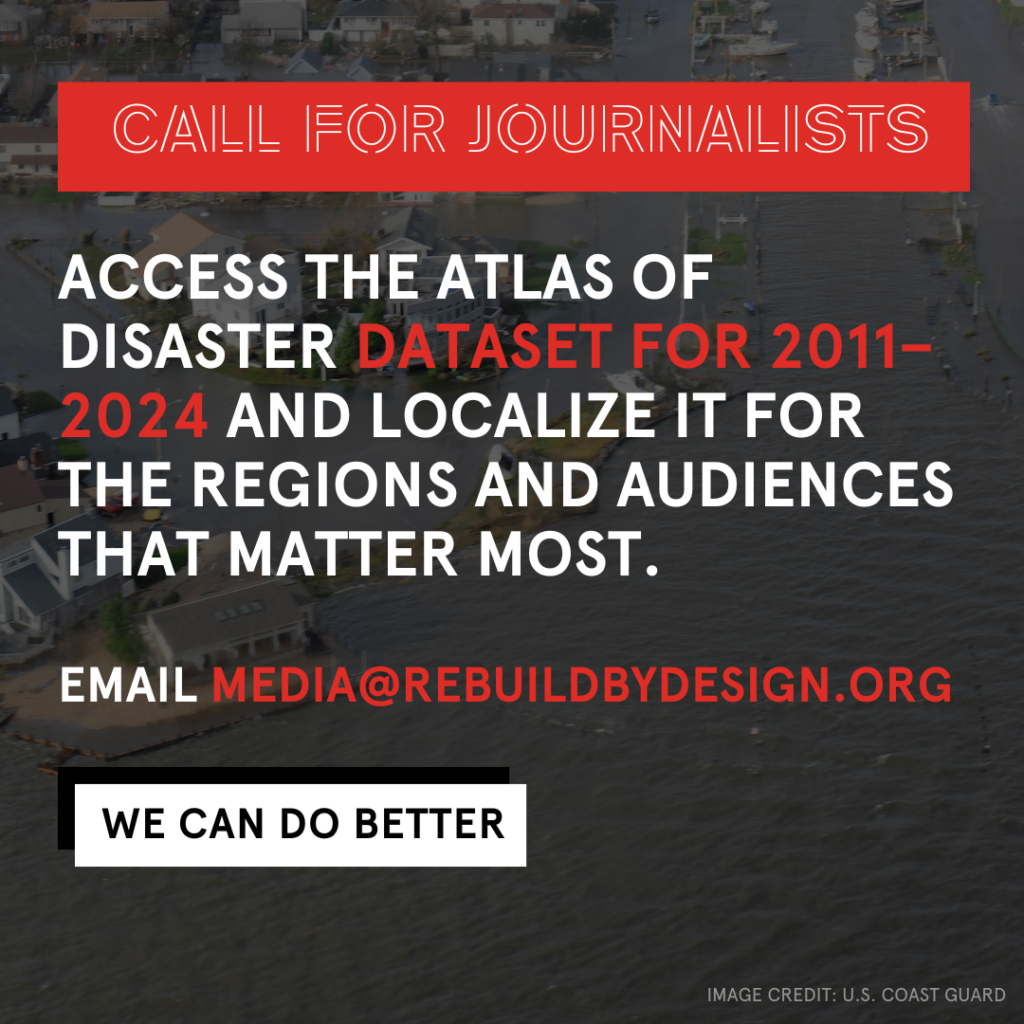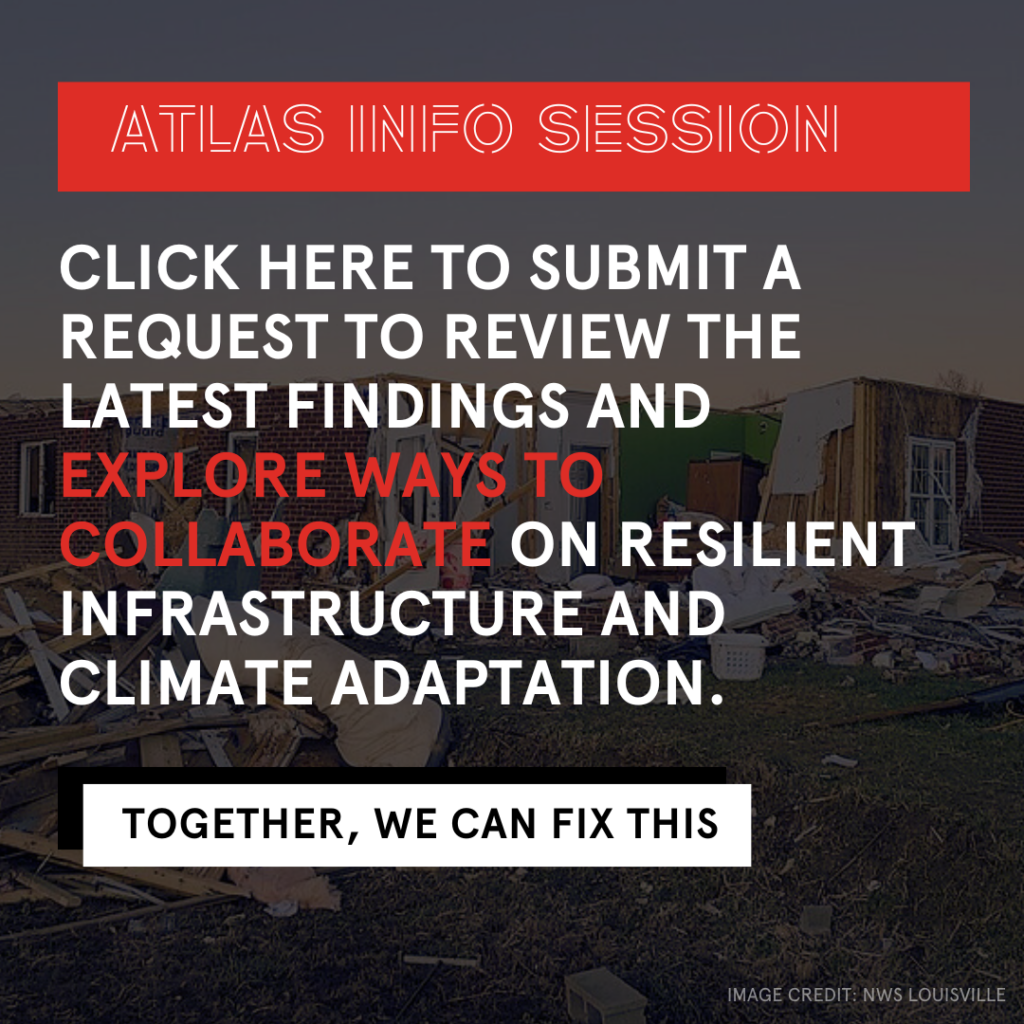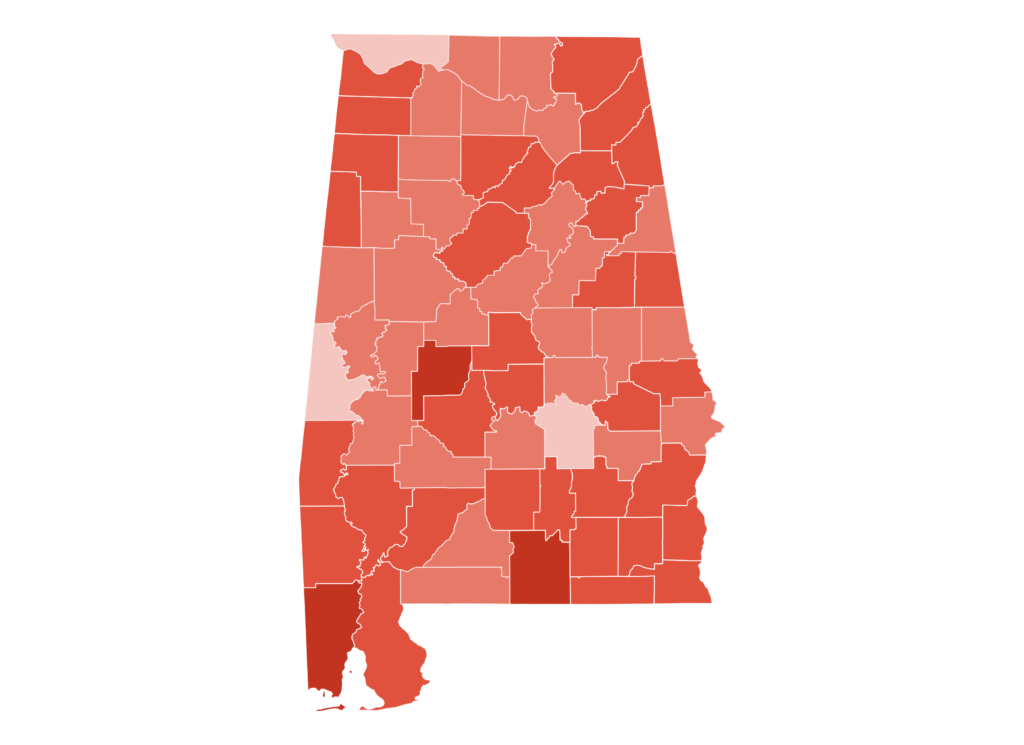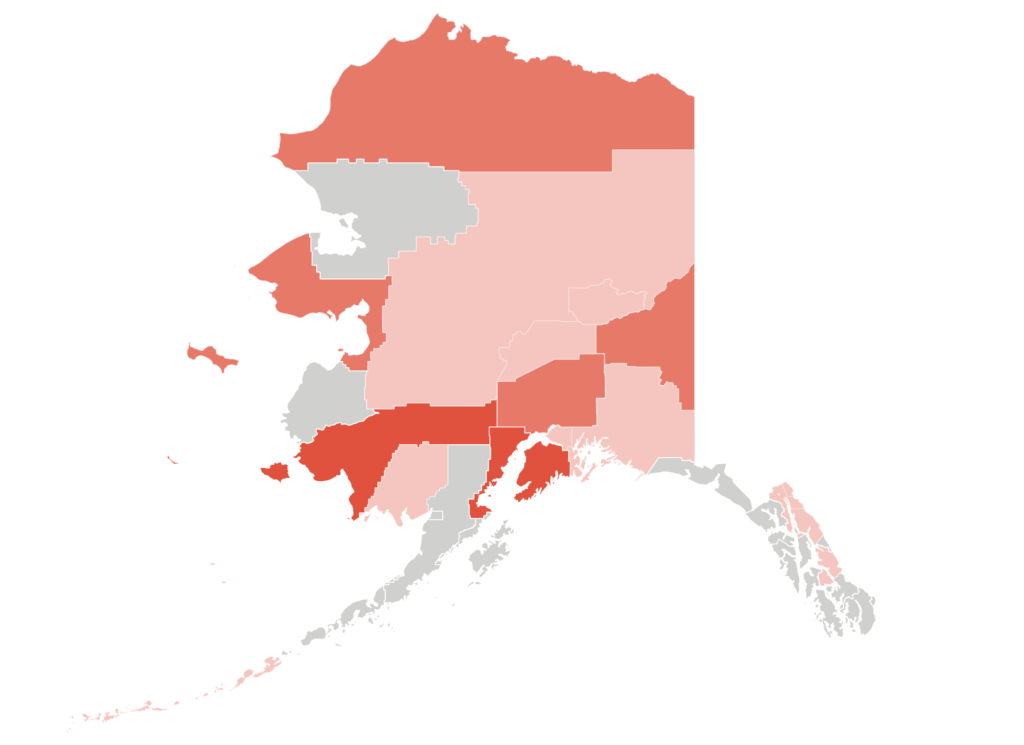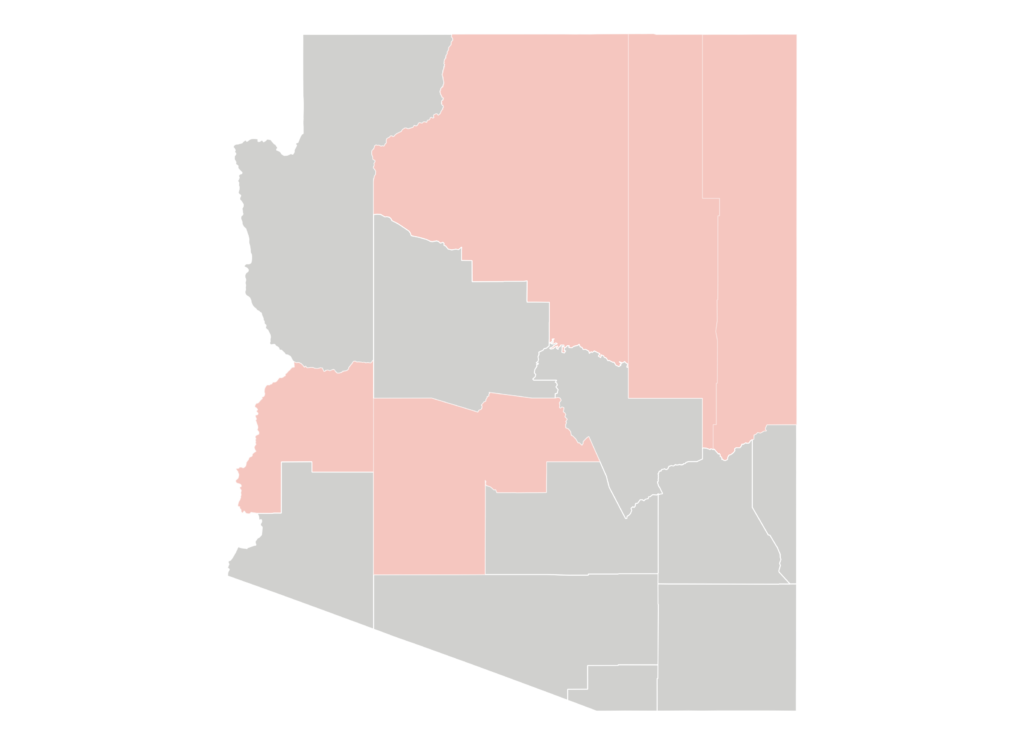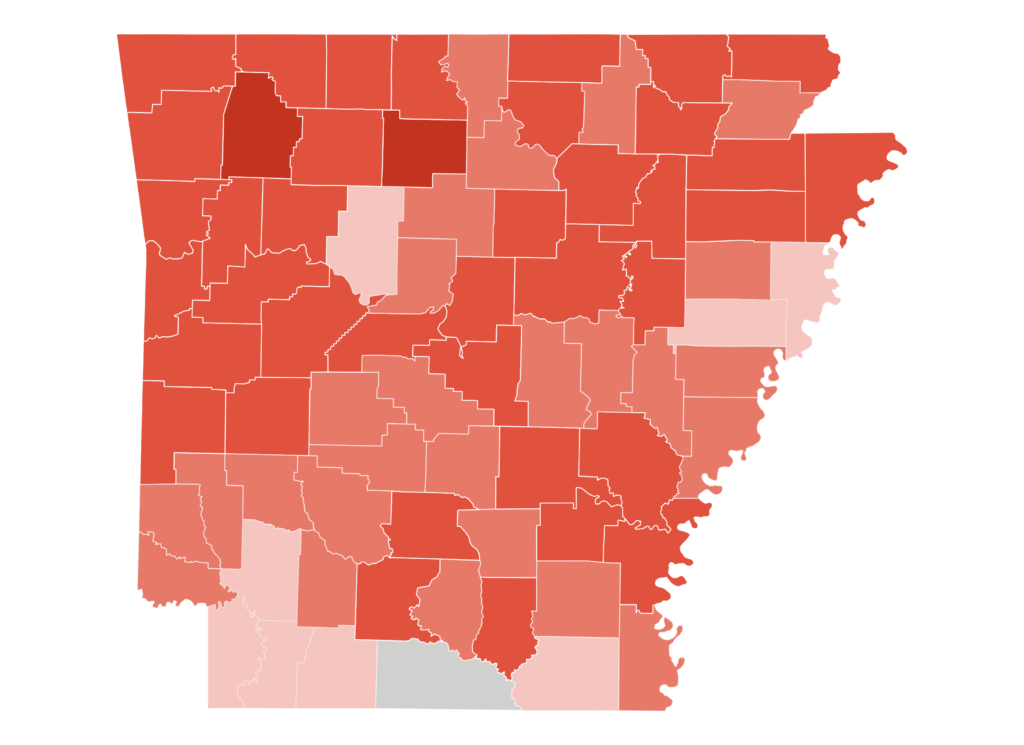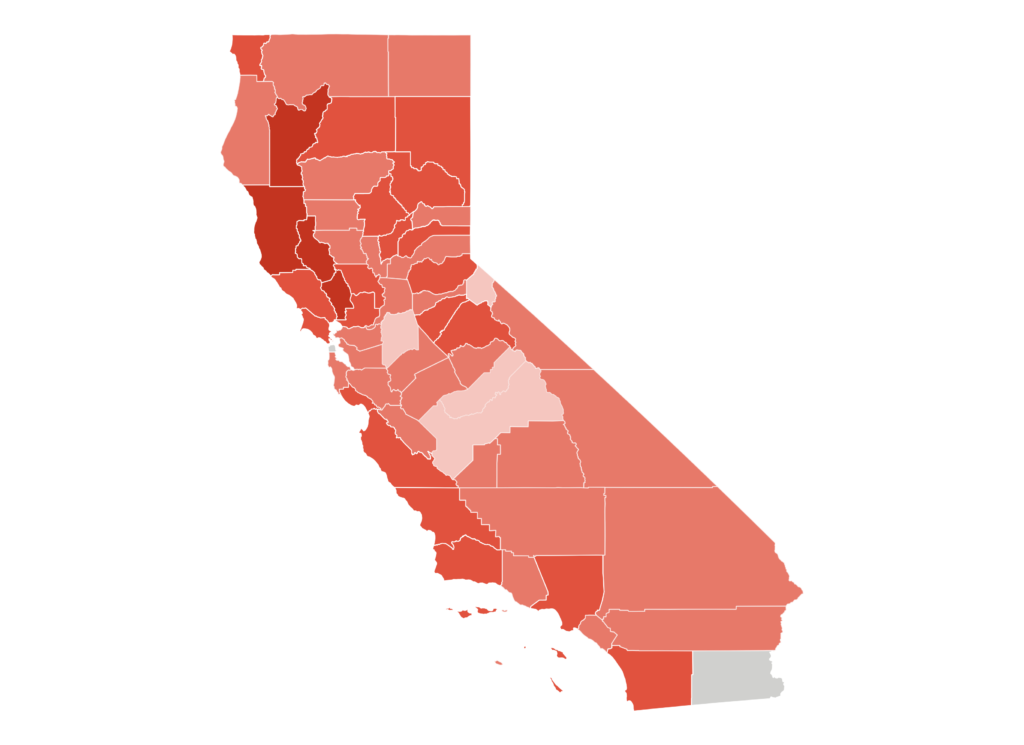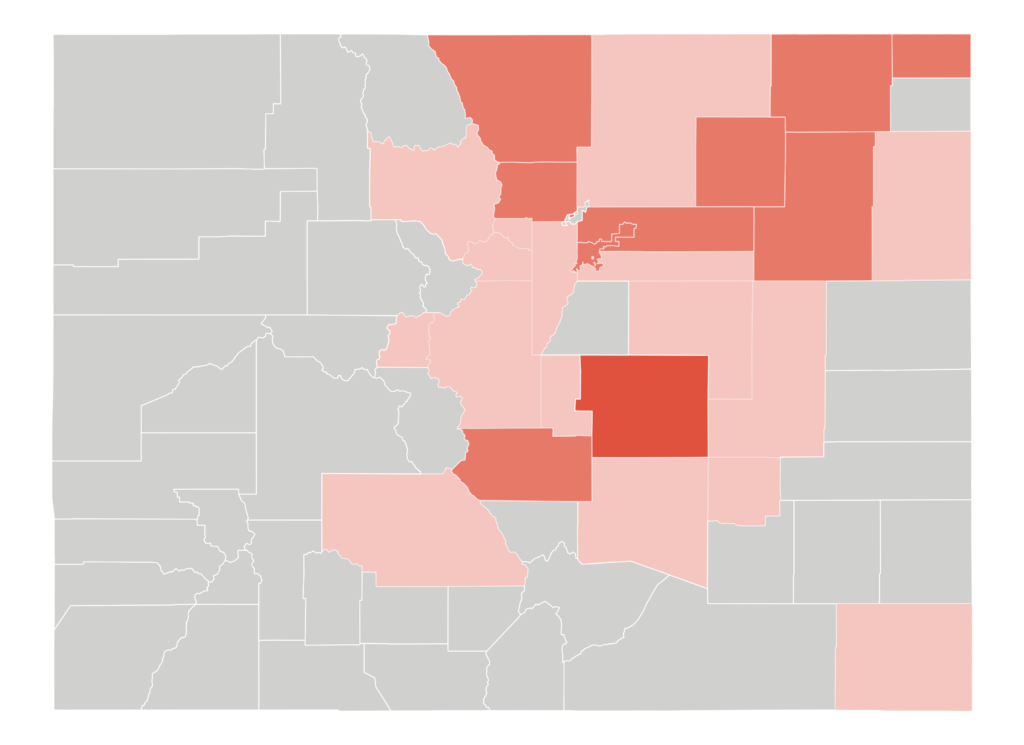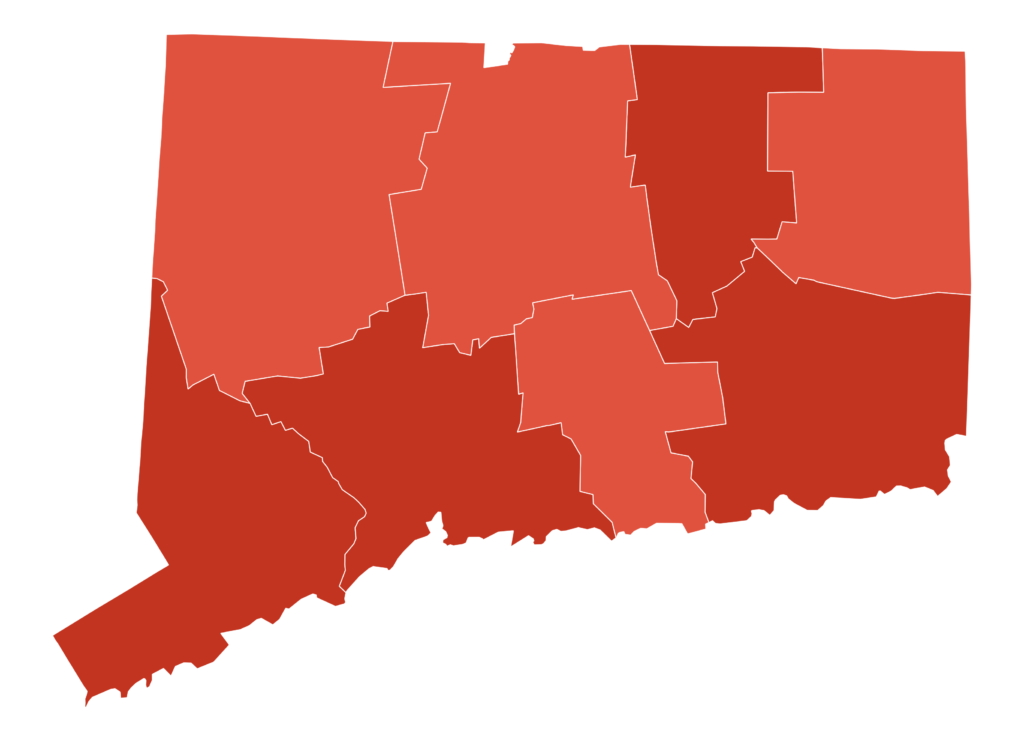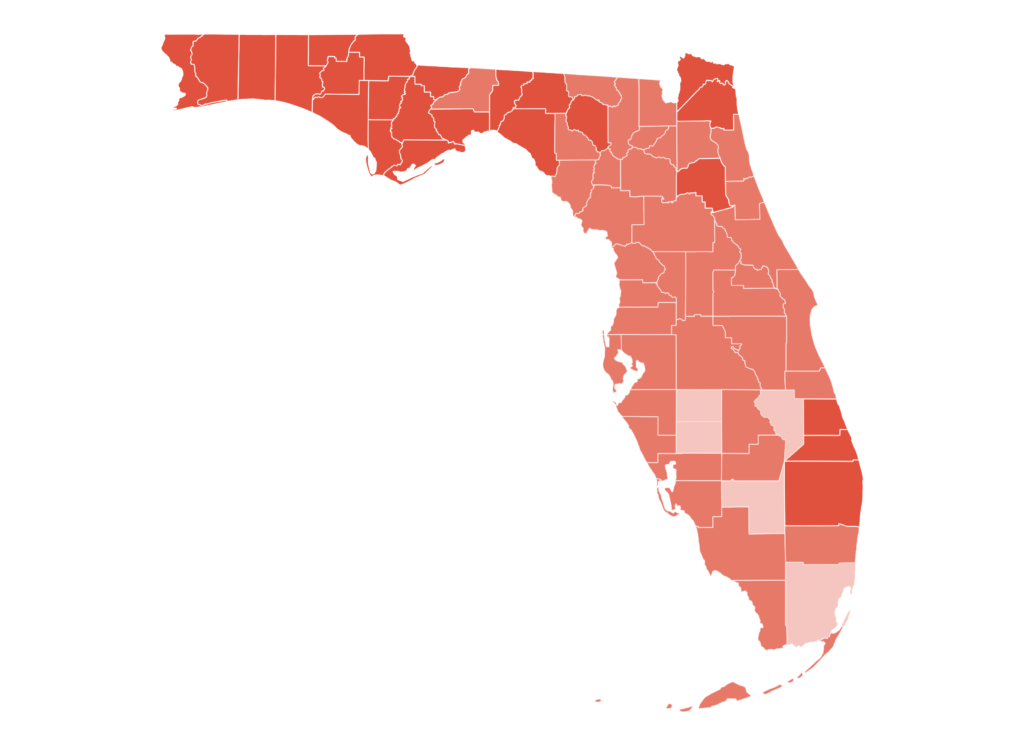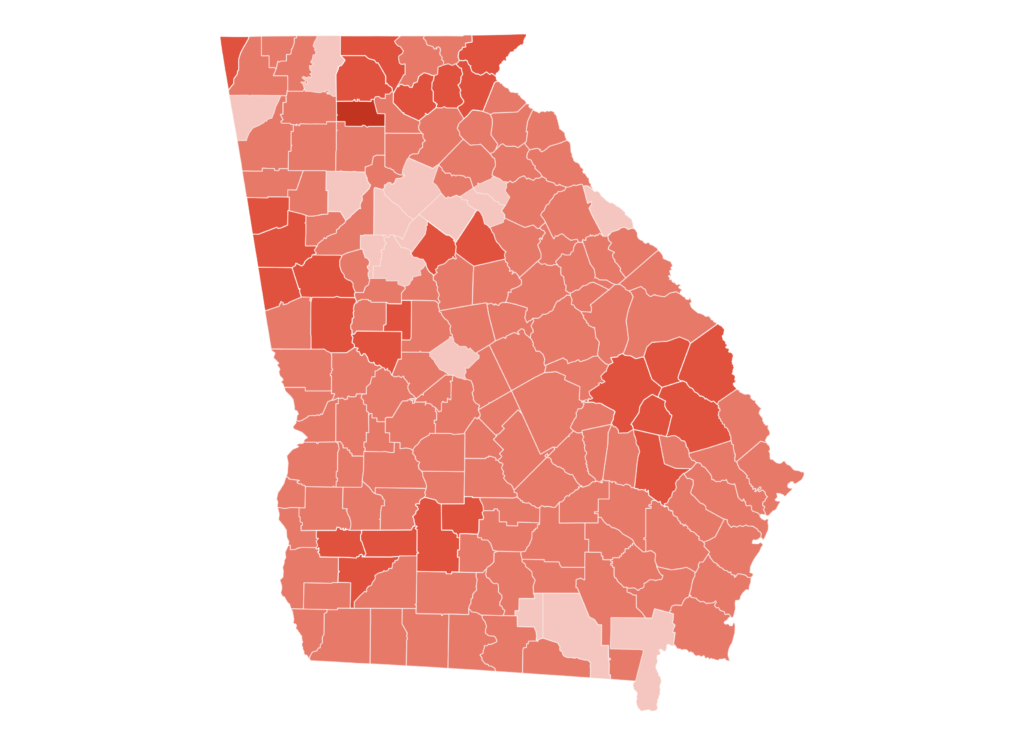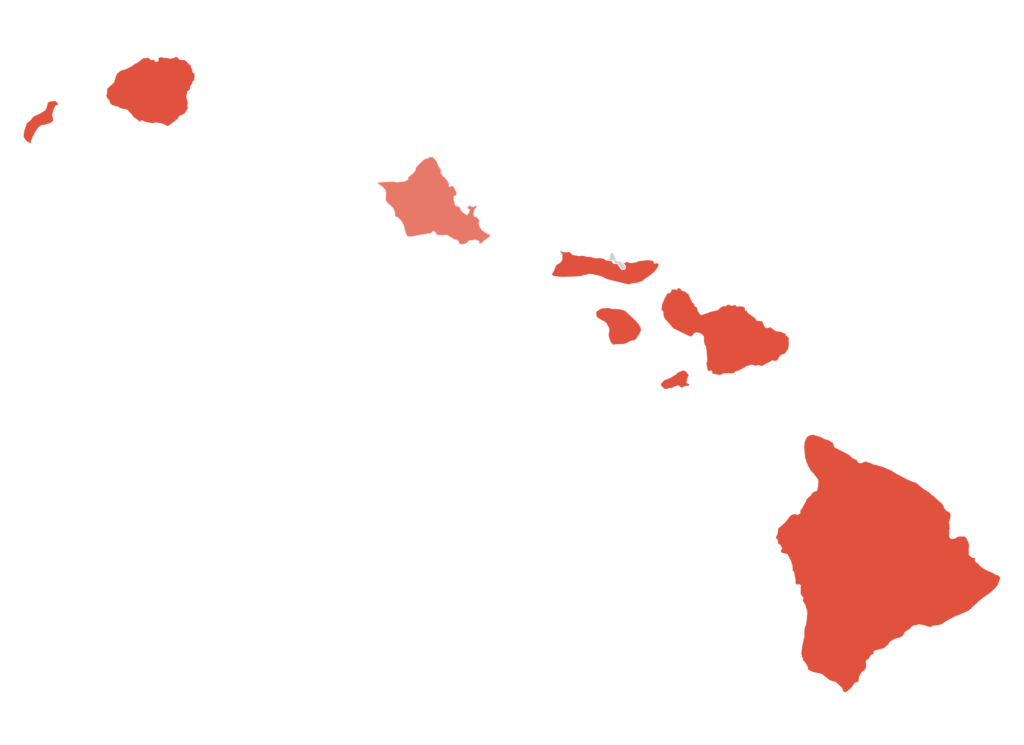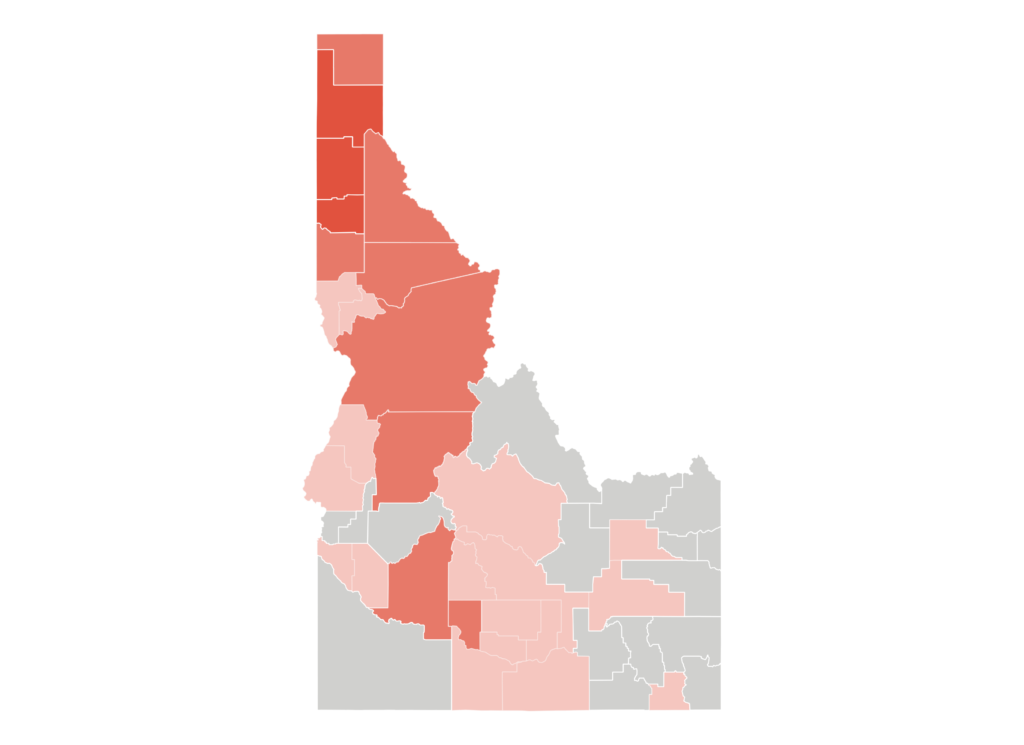Kentucky National Guard Responds to Eastern Kentucky Floods, July 2022
ATLAS OF ACCOUNTABILITy (2011-2024)
Between 2011 and 2024, 99.5% of congressional districts experienced at least one federally declared major disaster due to extreme weather, affecting communities across political, urban-rural, and socioeconomic lines. These events, fueled by climate change, cost taxpayers $117.9 billion in federal relief—$72.7 billion from FEMA for hazard mitigation (HM) and public assistance (PA), as well as $45.2 billion from HUD’s Community Development Block Grant – Disaster Recovery (CDBG-DR) program.
In 2024 alone, the U.S. faced 27 separate billion-dollar weather and climate disasters totaling $182.7 billion, making it the second-highest year on record according to NOAA—just behind the 28 events in 2023. These disasters displaced millions of people across the country. We can do better.
Rebuild by Design’s Atlas of Accountability maps federal major disaster declarations and federal post-disaster assistance obligations for every county in the United States, with an overlay of congressional district boundaries. This tool builds on our 2022 Atlas of Disaster report (see below), with updated data and analysis. The Atlas of Accountability tool and the analysis on this page reflect disaster declaration occurrences, as well as FEMA and HUD obligations, as of December 31st, 2024.
RANKING OF CLIMATE DISASTERS 2011-2024
States with Highest Disaster Count
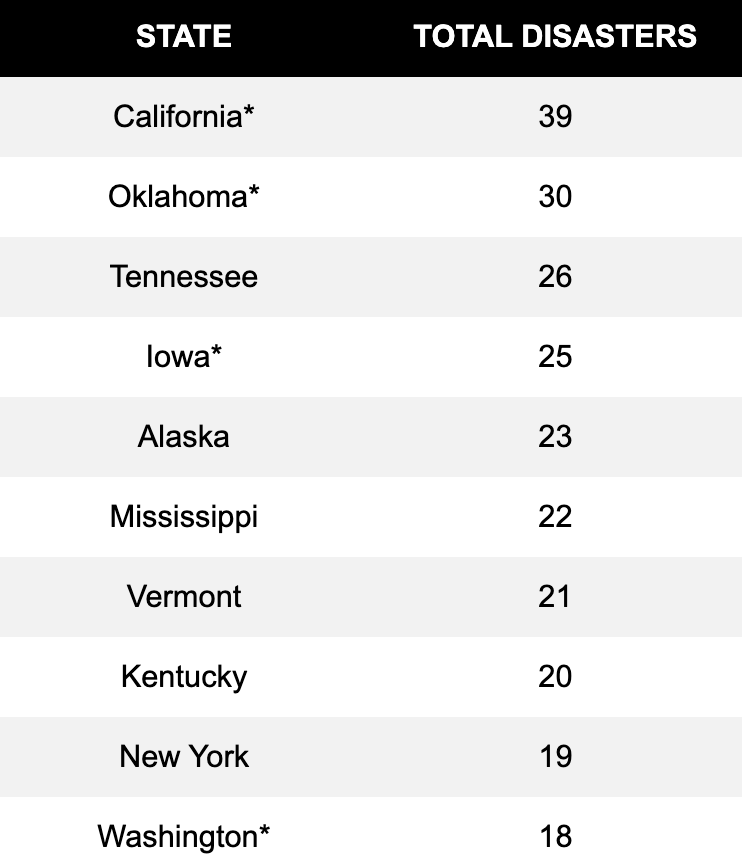
*In instances where a disaster declaration is made for both state and tribal governments, an event may be counted twice.
Highest Per Capita Disaster Assistance
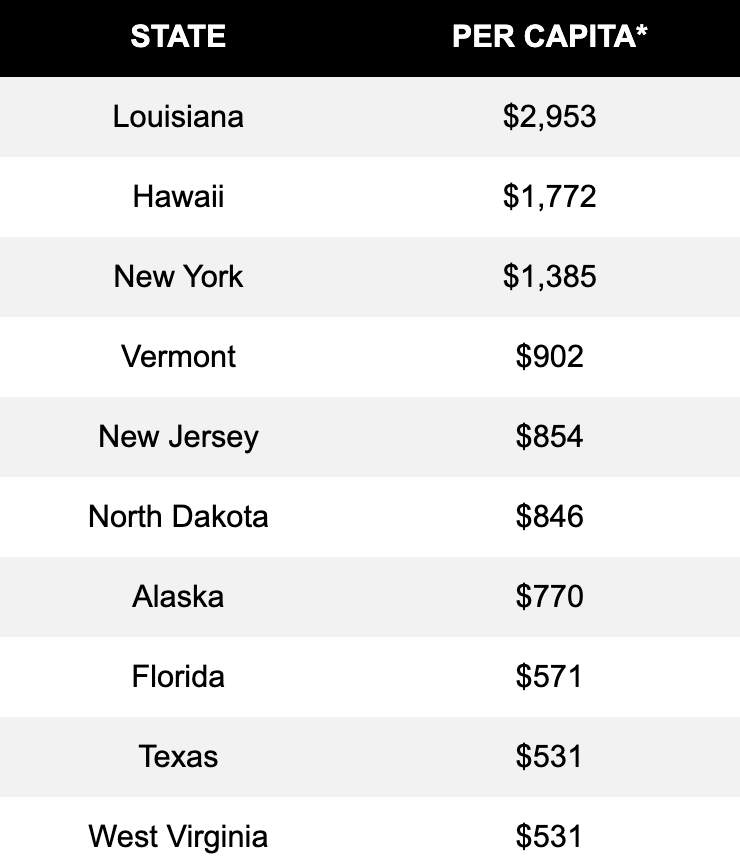
*Per capita is calculated using FEMA (PA+HM) & HUD CDBG-DR federal post-disaster funds.
Counties with Highest Disaster Count
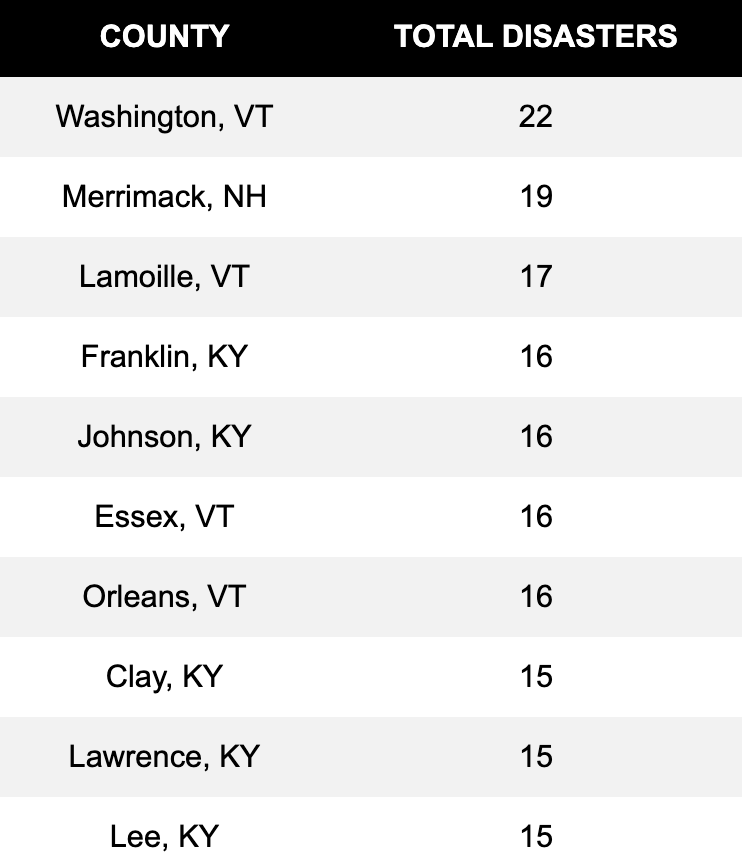
FINDINGS FOR EXTREME WEATHER DISASTERS 2011-2024
80% OF STATES HAD 10 OR MORE DISASTERS
Between 2011 and 2024, 40 states—representing 80% of the U.S.—recorded ten or more major disaster declarations. In 28 of those states, every county experienced at least one disaster.
39 DISASTERS IN CALIFORNIA*
California* experienced 39 major federal disaster declarations—more than any other state. Some declarations may be counted separately for tribal lands.
95.5% of U.S. Residents Live in Disaster-Declared Counties
Since 2011, around 315.6 million Americans reside in counties that have experienced a major disaster declaration, representing 95.5% of the U.S. population.
99.5% OF CONGRESSIONAL DISTRICTS HAVE EXPERIENCED DISASTERS
Only two districts have reported zero major disaster declarations since 2011, underscoring the bipartisan need for resilient infrastructure.
$117.9 BILLION IN FEDERAL DISASTER FUNDS
Since 2011, the federal government has allocated $72.7 billion through FEMA’s Public Assistance and Hazard Mitigation programs, plus $45.2 billion in HUD CDBG-DR funds for extreme weather events.
$1 INVESTED IN PRE-STORM ADAPTATION CAN SAVE $11
According to the National Association of Building Sciences, investing in pre-storm adaptation has a 11:1 payback for building code enhancements, 7:1 for riverine flooding, and 13:1 for earthquakes. Investing saves taxpayer dollars.
Note: Extreme heat is recognized as a leading threat in what is on track to be the hottest year on record (Climate Central). It is not included in this analysis because the Stafford Act, the law governing the disaster declaration process, ties disaster declarations to economic loss or damages. Since extreme heat events are less likely to cause physical damage, there has never been a federal major disaster declaration for extreme heat or extended heat waves. According to NOAA, heat remains the leading cause of weather-related deaths in the United States.
Terms: “Major Disaster Declaration” as issued by the President for severe events beyond Local or State control, “Climate Disaster” as extreme weather events worsened by climate change (excluding e.g. biological), “FEMA Public Assistance” as funding for local, state, or tribal governments for disaster response and recovery, and “FEMA Hazard Mitigation” as funding for local, state, or tribal governments to reduce future disaster risks tied to the same climate event.
Disaster Count Across All Congressional Districts 2011-2024

What Changed in the 2024 Update?
- 46 new counties recorded their first disaster in 2024, leaving 238 counties (7.6%) with no declarations since 2011.
- New Hampshire and Missouri joined Vermont, Kentucky, and Louisiana among the top 10 congressional districts with the most disaster declarations.
- California* remains the state with the highest declarations at 39 (up from 34), followed by Oklahoma* (30, up from 27), Tennessee (26, down from 28), Iowa* (25, up from 23), and Vermont (21, up from 20).*
- Louisiana’s per capita funding rose from $2,681 to $2,953, while Hawaii newly appears among the top five highest per capita costs at $1,772. New York, New Jersey, and Alaska also show higher totals in the updated dataset.
- Washington County (VT) leads with 22 disasters, followed by Merrimack County (NH) at 19. Multiple Vermont counties now rank in the top 10. Kentucky remains prominent, with Johnson County rising from 15 to 16.
*In instances where tribal land is affected, federal disaster declarations may count the same event twice
ATLAS OF DISASTER
In 2022, Rebuild by Design released Atlas of Disaster, in collaboration with APTIM and iParametrics and an unbelievable team of engineers, researchers, finance experts, data managers, and volunteers.
The report identifies, analyzes, and synthesizes different data sets and ideas into an accessible compendium of county-by-county climate impacts.
ATLAS OF DISASTER TABLE OF CONTENTS:
- There is No Turning Back
- Funding the Problem, Not the Solution
- Overlooking the Deadliest Risk: Extreme Heat
- The outsized impact of drought
- Cost of Inaction: We are Already Paying
- Mapping the Impact
- Guide to Building a Collaborative Program
- Financing Resilient Infrastructure
- Cost-Benefit Reform
- Recommendations
- Appendix
STATE BY STATE RISK MAPS BY COUNTY 2011-2021
TOGETHER, WE CAN FIX THIS
While these numbers seem bleak, there are actions we can take to protect communities lives and livelihoods. Rebuild by Design is calling for:
- Shifting post-disaster federal dollars for pre-disaster funding so communities can in invest infrastructure before they suffer.
- Creating new sources of dedicated funding such as investigating state voter referendums, surcharges on certain types of insurance coverage (e.g., property and casualty), and state-level superfund laws.
- Mandating that U.S. insurance companies take into account mitigation measures when pricing insurance policies, giving policyholders incentives to take small actions that will save all taxpayers money, just as FEMA does with the National Flood Insurance Program’s Community Rating System.
- Creating better infrastructure: ensuring that every piece of new infrastructure is built to withstand climate events to the life cycle of that infrastructure; is designed infrastructure to address both physical and social vulnerabilities, thus multiplying taxpayers investments.
- Amending the Stafford Act to ensure that heat waves are treated the same as other federal disasters, deploying resources to communities who have been suffering with no end in sight.
Atlas of Accountability is based on research and data sources provided by the following:
- FEMA Data: Disaster declarations for climate events occurring 2011-2024, courtesy iParametrics
- County Districts: Geographic boundaries from U.S. Census TIGER/Line Shapefiles (2023)
- Congressional Districts: Geographic boundaries with 119th congressional representation from USDOT BTS
- Population: U.S. Census ACS 2018-2022 (5-Year Estimate)
- Spatial Analysis: Congressional districts were assigned to counties using spatial analysis, with a minimum 5% area overlap threshold between county and district boundaries.
